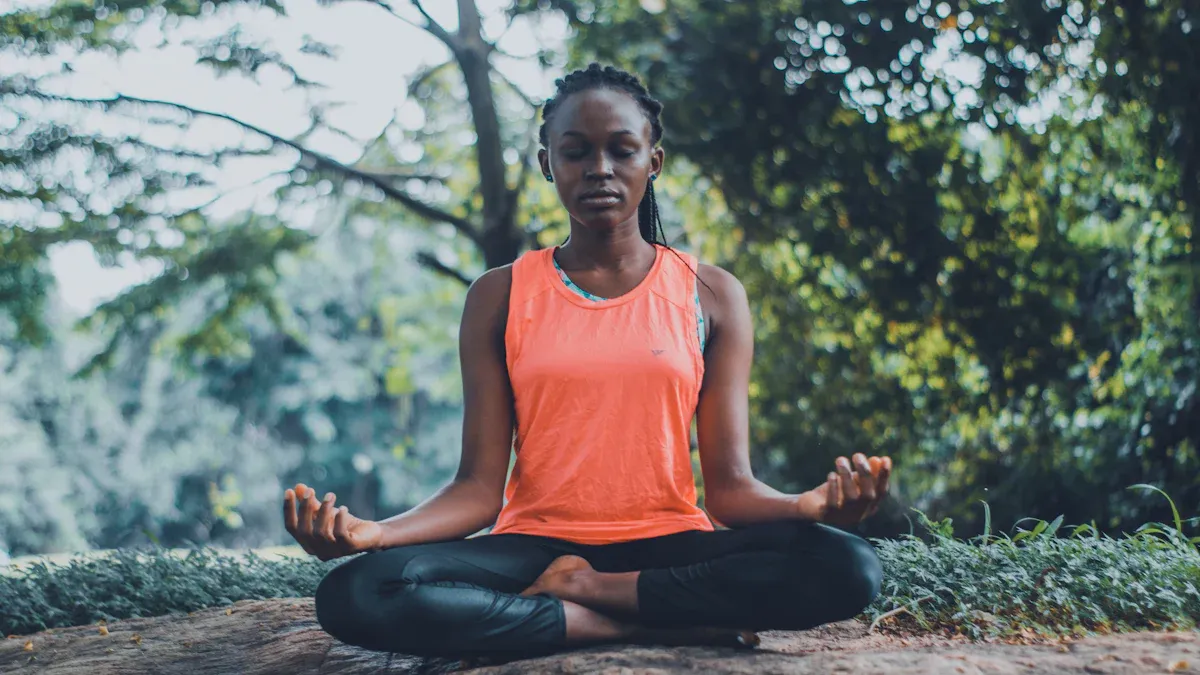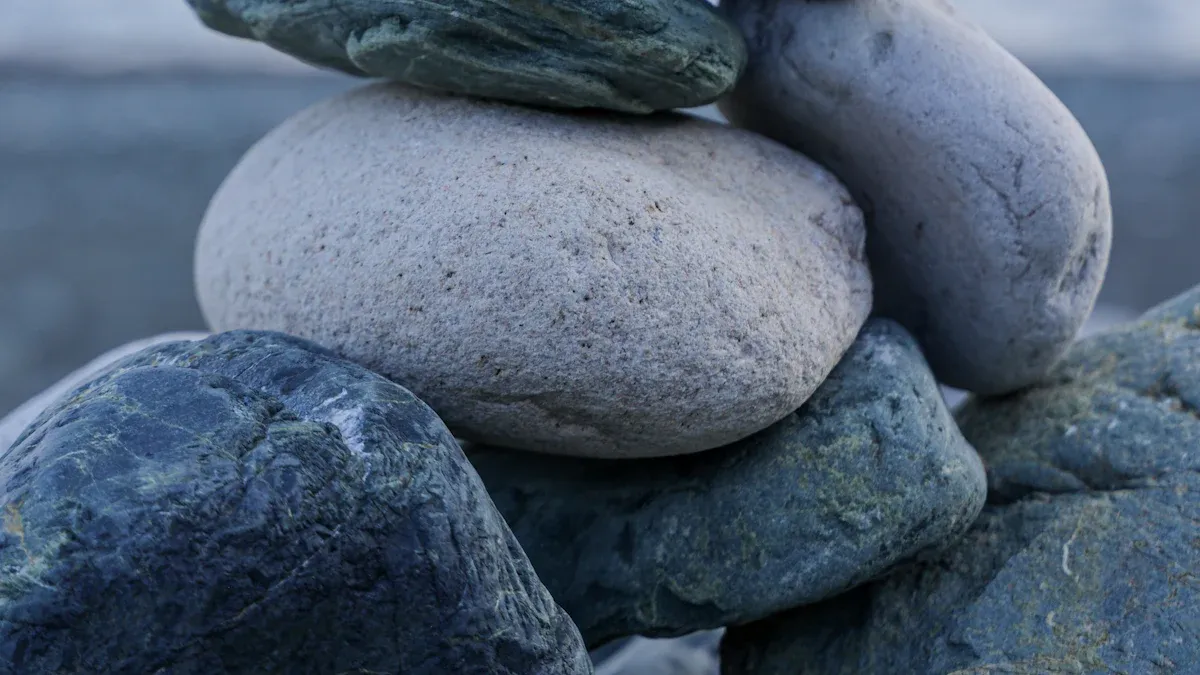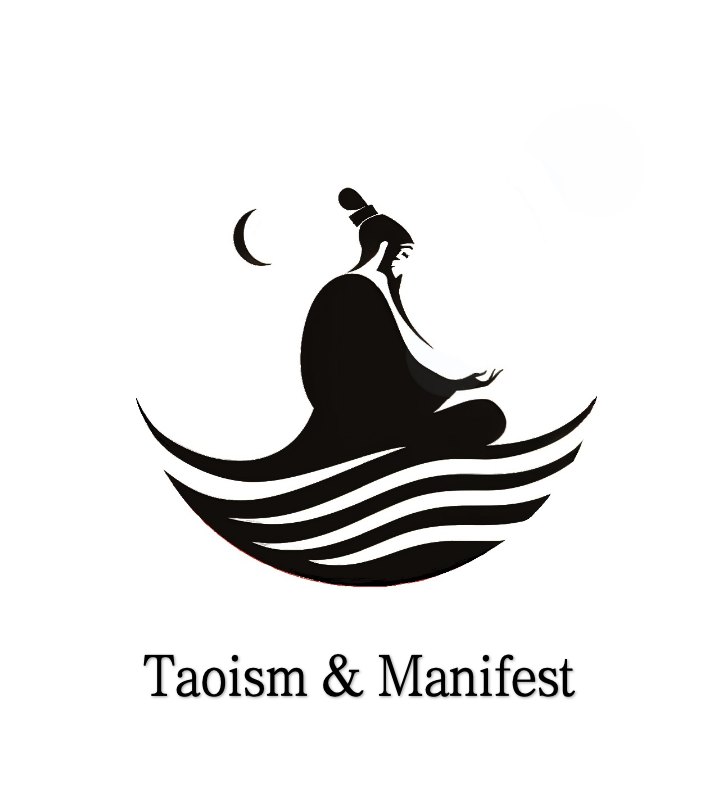
Achieving inner peace through Taoist meditation

You might feel like life pulls you everywhere at once. Think of your mind as a rough sea. Thoughts and worries crash like big waves. Most people feel this way. Just look at these numbers:
Statistic Description |
Percentage |
|---|---|
Americans experiencing physical or mental symptoms of stress in the last month |
75% |
U.S. adults rating their average stress between eight and ten |
24% |
U.S. workers experiencing work-related stress |
83% |
You deserve to feel calm. Taoist meditation has been used for thousands of years. It comes from old wisdom like the TaoTeChing. It gives a gentle way to find peace. Even beginners can feel better with its easy steps. You can start finding inner peace today.
Key Takeaways
Taoist meditation helps you calm your mind and feel less stress. Begin with easy steps like relaxing your body and clearing your thoughts.
Focus on the present moment by using 'Wu Wei,' which means doing things without forcing them. This way, you move with life instead of fighting it.
Spend time in nature to make your meditation better. Being outside can help you feel more peaceful and balanced.
Make meditation a habit by starting with short times. Just a few minutes each day can really help your mind feel better.
Be thankful and accepting when you meditate. Notice your feelings without judging them to feel lighter and more relaxed.
How Taoist meditation brings inner peace

Quieting the mind and embracing stillness
Life moves quickly. Your mind jumps from thought to thought. Taoist meditation asks you to slow down. You can find peace by sitting still. When you sit quietly, your mind gets a break. This break helps you feel calm. The calm feeling grows as you practice more.
Many people use Taoist meditation to quiet their minds. You can try easy steps to get started:
Body Relaxation: Begin with your toes. Relax each muscle as you move up. This helps your chi flow better.
Mental Cleansing: Notice your thoughts. Let them pass by like clouds.
Burning Meditation: Picture your stress as black dirt. Imagine golden light burning away the darkness. You will feel refreshed.
People say their focus and relaxation get better over time. You might notice your mind feels clearer. Your body may feel lighter. You could see changes like slower heartbeat or deeper breaths. These signs show you are learning to be still.
Studies show Taoist meditation helps you find harmony inside. If you practice often, your stress hormones go down. Your mind and body get healthier. You may feel more relaxed and happier. These good changes make Taoist meditation a strong way to handle stress and find inner peace.
Being still does more than calm your mind. Mindfulness meditation, including Taoist ways, helps you control your feelings. Scientists found that people who meditate can handle emotions better. Their brains work more in areas for balance. This means you can deal with stress and tough feelings more easily.
Surrendering to the present moment
Taoist meditation teaches you to let go and live now. You do not need to force your mind to be quiet. You learn to accept each moment as it comes. This gentle letting go helps you feel peaceful with yourself and the world.
Taoist meditation is special because it follows 'Wu Wei,' which means effortless action. You match yourself with life’s natural flow. Some mindfulness practices use strict steps. Taoist meditation lets you move with life’s rhythm. You do not chase goals. You enjoy the journey.
Taoist meditation uses effortless action and natural alignment, not strict rules.
You take part in each experience, not just watch from far away.
The goal is harmony with life’s flow, not only stress relief.
When you let go and live in the present, you get many mental benefits:
You feel less stress.
You can focus better.
You find more emotional balance.
Remember, inner peace grows when you stop fighting the present and start moving with it. Every breath and every moment is a chance to feel calm and whole.
If you want to learn how old wisdom can help your daily life, you might like the article "How Taoism Can Help You Find Balance in Modern Life.
Taoist meditation principles

Harmony with nature and the Tao
You can feel calm when you connect with nature. Taoist meditation helps you match your thoughts and actions with the Tao. The Tao is the main idea behind everything in the universe. When you respect nature’s balance, you start to feel peaceful inside. Taoism teaches that changing your habits to fit the Way of Nature helps you deal with stress and worry. You become part of the world’s rhythm instead of just watching it.
Here are some important ideas from the Tao Te Ching that help with harmony:
The Tao is the main idea behind everything.
Balance between yin and yang.
Focus on being simple and natural.
Go along with life’s natural flow.
Principle |
How It Supports Meditation |
|---|---|
Interconnectedness |
You feel like you belong in nature |
Ecological balance |
You care for all living things |
Simplicity |
You let go of extra worries |
To learn more about how mindfulness can help with stress, check out How to Reduce Stress with Mindfulness Meditation Guide.
Contentment and acceptance
You can build inner peace by practicing contentment and acceptance. Taoist meditation teaches you to accept each moment as it comes. You do not have to be perfect. You learn to enjoy what you have and let go of things you cannot change. The Tao Te Ching and Gold Pavilion classic both say that living simply and accepting change brings happiness.
Tip: When you meditate, remember to be thankful for small things. Accept your feelings without judging them. This helps you feel lighter and more relaxed.
Wu wei and effortless flow
Wu wei means doing things without forcing them. You move with life’s natural flow. In meditation, you use wu wei by letting your breath and thoughts settle. You do not try to control them. You act when needed and rest when it is time.
Try these steps to use wu wei every day:
Begin your day with deep breaths to stay calm.
Notice your body and let go of tension.
Balance work and rest to keep your energy steady.
Think about control—what felt easy today?
Watch nature to match its rhythm.
You can handle things as they come. You focus on now and know when to act or wait. This way helps you find inner peace and balance.
Taoist meditation techniques
Breathing and mindful awareness
You can start your journey to inner peace with simple breathing and mindful awareness. Taoist meditation teaches you to notice your breath and body. This helps you relax and feel calm. Follow these steps to begin:
Choose a Comfortable Position
Sit cross-legged, stand tall, or lie down. Keep your back straight and your body relaxed. Make sure you feel safe and at ease.Watch Your Natural Breath
Close your eyes or lower your gaze. Pay attention to your breath. Notice how it moves in and out. Do not try to change it. Just observe.-
Try Taoist Breathing Techniques
Belly Breathing: Place your hand on your belly. Breathe in and let your belly rise. Breathe out and let it fall.
Whole-Body Breathing: Imagine your whole body breathing in and out. Feel the air move through every part of you.
Circular Breathing: Picture your breath moving in a smooth circle, never stopping.
Lengthening Your Breath: Slowly make each breath a little longer and deeper.
Tip: If your mind wanders, gently bring your focus back to your breath. You do not need to be perfect. Every breath is a new chance.
Taoist meditation values naturalness. You learn to accept your body and mind as they are. You do not force anything. You let your breath guide you to a peaceful state.
Zuowang (Sitting and Forgetting)
Zuowang means "sitting and forgetting." You let go of worries, plans, and even your sense of self. This practice helps you find deep calm and clarity. Here is how you can try Zuowang:
Sit Comfortably
Find a quiet place. Sit with your back straight and your hands resting on your lap.Relax Your Body
Start at your toes. Relax each muscle up to your head. Let your body feel heavy and soft.Let Thoughts Pass
Notice any thoughts or feelings. Imagine them as clouds drifting by. Do not hold on to them.Forget Yourself
Let go of your name, your plans, and your worries. Just sit and be.
Many beginners face challenges with Zuowang. Here is a table to help you overcome common problems:
Challenge |
Solution |
|---|---|
Overcoming Mental Distractions |
Notice your thoughts, focus on your breath, and let distractions fade. |
Understanding Effort vs. Effortlessness |
Balance trying with letting go. Allow yourself to relax into the practice. |
Integrating Profound States into Daily Life |
Accept thoughts as passing. Adjust your posture if needed. Open your eyes if you feel sleepy. |
Remember, you do not need to reach a perfect state. Each session brings you closer to peace.
Visualization and guided practice
Visualization in Taoist meditation helps you connect with your body’s energy. You focus on the lower dan t’ian, a spot about three inches below your navel. This area is the center of your energy. Here is a simple way to practice:
Sit or Lie Down Comfortably
Close your eyes and relax your body.Bring Your Attention to the Lower Dan T’ian
Imagine a warm, gentle light glowing in this spot.Let the Light Grow
Picture the light spreading through your body. Feel it bring warmth and calm.Stay with the Feeling
Rest your mind on this light. If thoughts come, gently return your focus.
“Taoist practitioners focus on the lower 'dan t’ian' as a central object of meditation, which is three inches below the navel. This focus allows them to settle deeply into their bodies, contrasting with other meditation traditions that may use various objects of focus like breath or light. The lower dan t’ian is considered the foundation for all other energies in the body, highlighting a unique aspect of Taoist meditation.”
You can also use guided audio or gentle music to help you stay focused. If you get distracted, bring your attention back to the dan t’ian.
Mindful movement (Tai Chi, Qigong)
You can find inner peace through movement as well. Tai Chi and Qigong are gentle exercises that blend breath, focus, and slow motion. These practices help you feel calm, strong, and balanced. Here are some benefits you may notice:
Benefit Type |
Description |
|---|---|
Psychological Benefits |
You may feel more confident, motivated, and happy. |
Quality of Life Improvements |
Your health, energy, and mood can improve. |
Mood Regulation |
You may notice less sadness, anger, and fear. You may feel more joy and self-esteem. |
Stress Reduction |
Tai Chi can lower anxiety and help you stay calm in tough times. |
Tai Chi and Qigong help you become aware of your body and breath.
These movements teach you to stay calm, even when life feels busy.
You learn to move with ease and grace, not force.
Start with simple movements. Focus on how your body feels. Let your breath guide each motion. If you feel tense, slow down and relax.
If you want to explore more ways to bring calm into your life, you may enjoy the article "How Taoism Can Help You Find Balance in Modern Life."
You do not need to master every technique at once. Choose one that feels right for you. Practice a little each day. Over time, you will notice more calm, balance, and inner peace in your life.
Integrating inner peace into daily life
Building a consistent meditation habit
You can make meditation a habit by starting with small steps. Try a short session each morning. Focus on your breath and think about your day. This helps you feel calm before things get busy.
Practice qigong to help your body feel stronger.
Notice your thoughts and feelings. You will learn more about yourself.
Use mindful time blocking. Set times for work, exercise, and rest.
Strategy |
Practice Description |
Benefit |
|---|---|---|
Morning Meditation and Intention |
Start your day with 10-15 minutes of meditation. Focus on your breath and set an intention. |
This helps your mind feel calm and ready for the day. It can lower stress and help you feel peaceful. |
Mindful Time Blocking |
Plan your day by setting times for each activity. Include work, exercise, and relaxation. |
This keeps your day balanced. It helps you remember to take care of yourself. |
Overcoming obstacles and staying motivated
You might have trouble keeping your meditation habit. Sometimes your mind feels busy or you get distracted. You may doubt yourself or lose interest. These problems are normal and part of learning.
Wanting things can fill your mind with happy thoughts.
Dislike can bring up bad feelings.
Feeling jumpy makes it hard to sit still.
Feeling tired can make you want to stop.
Doubt can make you unsure about meditating.
Say what is distracting you when it happens.
It is okay to make mistakes. Learn from each session.
Ask a friend or even a pet to help you keep going.
.
Connecting with nature for ongoing calm
Nature can help you feel more peaceful. Go outside and let what you see and hear help you relax. You can meditate near flowers in spring, enjoy the sun in summer, watch leaves in fall, or find quiet in winter.
Meditate outside to feel close to nature.
Listen to birds, breathe fresh air, and enjoy the sunlight.
Use Wu Wei to move easily with nature’s rhythm.
You will feel less stress and more peace. Being in nature often helps you stay calm and balanced all year.
You can feel peaceful inside by using Taoist meditation and its main ideas:
Wu Wei lets you go with life’s flow, not fight it.
Growing your chi helps you feel calm and balanced.
Being close to nature makes you feel more in harmony.
Begin with easy breathing or simple visualization. Do this every day in a quiet place. After some time, you will feel more energy and clear thoughts. Your feelings will be more balanced. Inner peace builds slowly, one step at a time. You can make your life calm and clear. 🌱
FAQ
What if I cannot stop my thoughts during Taoist meditation?
You do not need to force your mind to be empty. Let your thoughts come and go like clouds in the sky. Each time you notice them, gently return to your breath. Over time, you will feel more calm and focused.
How long should I meditate each day to feel inner peace?
Start with five to ten minutes. You can add more time as you get comfortable. Even short sessions help you feel inner peace. The most important thing is to practice regularly and enjoy the process.
Can I practice Taoist meditation if I am very busy?
Yes, you can fit meditation into any schedule. Try a few minutes in the morning or before bed. You can even practice mindful breathing while waiting in line. For more ideas, explore How to Reduce Stress with Mindfulness Meditation Guide.
Do I need special equipment or a teacher to begin?
You do not need anything special to start. Find a quiet spot and sit comfortably. You can learn from books, videos, or online guides. If you want more support, a teacher can help you grow.
How does Taoist meditation help with stress and emotions?
Taoist meditation teaches you to relax and accept each moment. You learn to let go of tension and find balance. This practice helps you handle stress and emotions with more ease. You will notice more inner peace as you continue.
See Also
How to Reduce Stress with Mindfulness Meditation Guide





